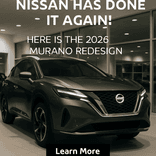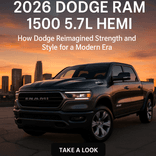The 2026 Hyundai Tucson: A Fresh Take on the Compact SUV for Today’s Driver
The 2026 Hyundai Tucson enters the compact-SUV arena with a renewed sense of purpose, blending refined styling, modern powertrains and advanced tech. From its redesigned cabin to its updated engines, this model year raises the bar. Whether you’re looking for fuel-efficiency, connectivity or everyday versatility, the 2026 Tucson has something to offer. Read on to explore how this SUV might change what you expect from your next vehicle.
The Evolution of a Bestseller
The Hyundai Tucson has long been one of the brand’s most successful models worldwide. Known for its practicality, reliability, and design flair, it sits comfortably among competitors like the Toyota RAV4, Honda CR-V, and Mazda CX-5. For 2026, Hyundai focuses on refinement rather than radical reinvention — a move that prioritizes the driver’s experience through smarter upgrades, cleaner design, and expanded hybrid technology.
The 2026 Tucson refines Hyundai’s latest “Parametric Dynamics” design language, giving the SUV a more streamlined and mature aesthetic. Every line serves a purpose — not just for looks, but for aerodynamic efficiency and visual harmony. The result is a vehicle that looks futuristic yet approachable, urban yet adventurous.
Design and Interior: Simplicity Meets Sophistication
At first glance, the 2026 Tucson feels familiar but elevated. Hyundai’s designers took what worked in the previous generation and enhanced it through subtle yet impactful updates.
The front fascia features sharper LED lighting signatures and a more pronounced grille pattern. The body lines flow seamlessly from front to rear, creating a cohesive, muscular profile. Wheel designs vary across trims, with options that range from sleek 17-inch alloys to bold 19-inch finishes.
Inside, the transformation continues. The cabin showcases a horizontal layout that emphasizes width and openness. The dashboard is minimalist — dominated by dual 12.3-inch displays that merge instrument data with infotainment seamlessly. Materials have taken a noticeable step up in quality: soft-touch surfaces, ambient lighting, and precise detailing give the interior a more premium character.
Driver comfort and ergonomics are central. Seats are supportive without feeling firm, visibility is excellent, and physical controls remain intuitive despite the digital focus. Hyundai strikes a balance between futuristic and familiar — ensuring tech doesn’t overwhelm functionality. Powertrains and Performance
Under the hood, the 2026 Tucson lineup is designed to cater to a wide range of drivers. Depending on the market, buyers can choose from several powertrain options — each balancing efficiency, performance, and sustainability.
- 2.5-Liter Gasoline Engine: Produces around 187 horsepower and pairs with an 8-speed automatic transmission. It delivers steady acceleration suitable for daily commutes and highway cruising.
- 1.6-Liter Turbo Hybrid System: Available in both hybrid and plug-in hybrid configurations, generating between 226 hp and nearly 300 hp combined. This version delivers more punch, quieter operation, and excellent fuel economy.
- Diesel and mild-hybrid variants remain available in select regions, aimed at long-distance drivers seeking maximum range and efficiency.

